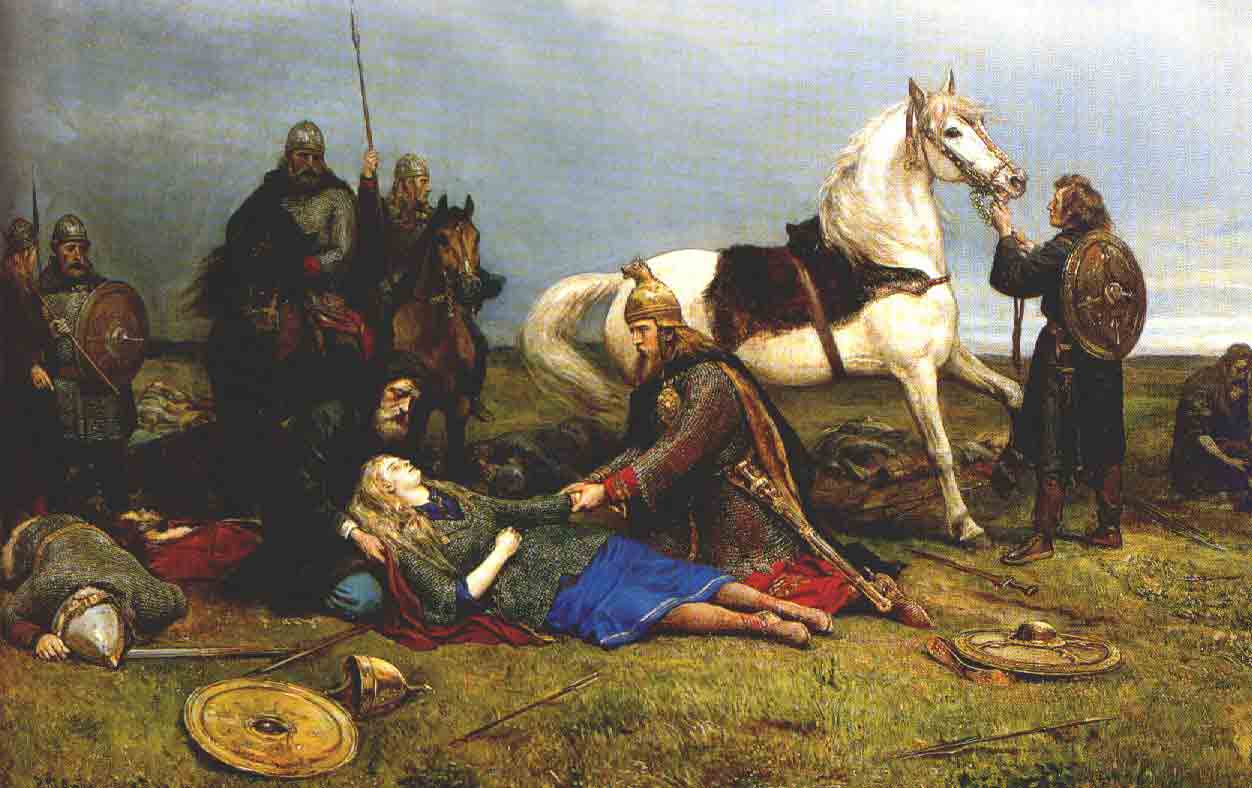At an archaeological site in Western Scotland, a Viking warrior was found buried in a 17-foot boat.
As the grave contains a large sword, a broad blade ax, and a bronze drinking horn, the remains are believed to belong to someone who was considered a warrior of high status.
Initially, the grave was thought to be that of a man, as that is what is usually found, however, two teeth and a few bone fragments, which are all that remain of the body, have characteristics belonging to a woman.
Despite this, there is speculation due to the accompanying artifacts, as they are the type of things normally found within the burial of a male. Nevertheless, distinctive isotopes found in the teeth are similar to those of a woman buried at Cnip on the Isle of Lewis, who lived during the same time as the person in the boat gravesite.
VIP Viking warrior found buried on the Scottish coast with a wealth of tools could be a WOMAN! https://t.co/muyJ3dfdjB
— Daily Mail Online (@MailOnline) February 9, 2017
Shieldmaidens are the legendary female warriors of many Viking sagas. They appear in Viking folklore, most notably, as the Valkyries, who were supposed to have carried the warriors to Valhalla.
Even though there are plenty of tales about the occasional Viking woman fighting in battle alongside the men, there has been no definite proof found to suggest the Shieldmaidens are a group of specially trained female warriors. Even so, Viking women were highly valued and respected in Norse culture, so it could be very likely that the grave does contain a Shieldmaiden of battle prowess.
ICYMI: The contents of a 1,000-year-old Viking warrior’s grave found in Scotland have been analyzed https://t.co/Po6qu2HMLf pic.twitter.com/KuVgqUlaAU
— Archaeology Magazine (@archaeologymag) February 18, 2017
The artifacts in the grave have been found to be of Irish and Scandinavian origin. It is also thought that the person may have traveled extensively. Other items in the grave are 213 rivets that would have been used in the construction of a boat, as well as items having to do with farming, cooking, and food production.
The grave was found at Swordle Bay as recently as 2011 and it is part of the first excavation in the UK of the burial of a whole boat. The grave is thought to date from about 1,000 AD, which would have been during the “second Viking age”. The presence of the items buried with the warrior show that the Viking had not accepted Christianity as her or his religion; it was a pagan belief that the weapons and horn were needed to gain access into Valhalla, Mail Online reported.
The contents of a 1,000-year-old Viking warrior’s grave found in Scotland have been analyzed https://t.co/Po6qu2HMLf pic.twitter.com/LM3ikzb3Q7
— Archaeology Magazine (@archaeologymag) February 10, 2017
The grave is what remains of the ship, buried about half a meter below the grass line and then filled with large stones to make a cairn.
Read another story from us: The story of how the Vikings discovered Iceland
The body would have been surrounded by whatever was important to him or her, but due to the age of the grave and its exposure to weather, very little remains of the occupant or the buried items.
